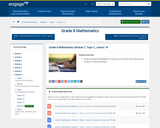
For this lesson, students apply the Pythagorean Theorem to real world and mathematical problems in two dimensions.
- Subject:
- Mathematics
- Material Type:
- Lesson Plan
- Provider:
- EngageNY
- Date Added:
- 02/24/2017

For this lesson, students apply the Pythagorean Theorem to real world and mathematical problems in two dimensions.

Students determine the length of an arc and area of a sector.
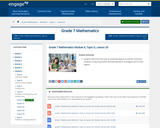
In this lesson, students determine the area of composite figures in real-life contextual situations using composition and decomposition of polygons and circular regions.
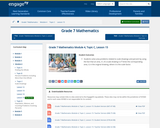
In this lesson, students solve area problems related to scale drawings and percent by using the fact that an area, A', of a scale drawing is k2 times the corresponding area, A, in the original drawing, where k is the scale factor.

Students learn the structure of arithmetic and geometric sequences.
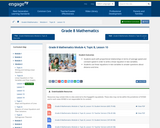
In this lesson, students work with proportional relationships in terms of average speed and constant speed in order to write a linear equation in two variables. Students use linear equations in two variables to answer questions about distance and time.
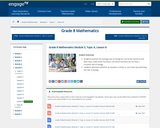
In this lesson, students examine the average rate of change for non-linear functions and learn that, unlike linear functions, non-linear functions do not have a constant rate of change. Students determine whether an equation is linear or non-linear by examining the rate of change.

Students examine two different proof techniques via a familiar theorem. Students complete proofs involving properties of an isosceles triangle.

In this lesson, students are given box plots of at least two data sets and will comment on similarities and differences in the distributions.
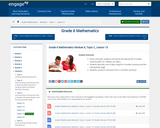
In this lesson, students are given a box plot to summarize the data by the 5-number summary (Min, Q1, Median, Q3, Max.) and describe a set of data using the 5-number summary and the interquartile range. Students also construct a box plot from a 5-number summary.
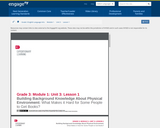
This lesson is designed to be a bridge from the idea of overcoming personal obstacles to overcoming obstacles in the physical environment that make it hard to access books. That Book Woman involves characters who struggle with both types of obstacles. This leads into an informational text in the latter part of the lesson that helps students build background knowledge about environments around the world. This lays the foundation for later work in the unit involving research into how people around the world overcome the physical obstacles to accessing books.
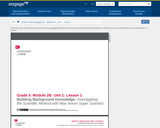
In this lesson, students analyze how visual and multimedia elements contribute to the meaning, tone, or beauty of a text.
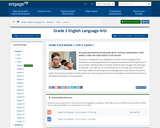
In this lesson from Expeditionary Learning, students will imagine themselves in the role of the main characters of That Book Woman by Heather Henson. They will discover the motivations of the characters through role-playing and investigating the illustrations in the text. Students will use an informational text to investigate why it might be difficult to get books to people, as it was in That Book Woman. This is Lesson 1 of 17 from the Grade 3 Curriculum Map Unit 3, Module 1: http://engageny.org/resource/grade-3-ela-module-1-unit-3 .

In this lesson, students understand that an equation is a statement of equality between two expressions. Students build an algebraic expression using the context of a word problem and use that expression to write an equation that can be used to solve the word problem.
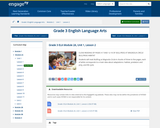
In this lesson, students read Bullfrog at Magnolia Circle in chunks of three to five pages, each of while corresponds to a main idea about adaptations: habitat, predators and prey, and life cycle.

In this lesson, students compare and contrast sections of two texts about the poison dart frog.
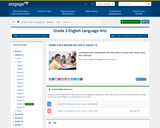
In this lesson, students continue to compare and contrast sections of two texts about the poison dart frog.
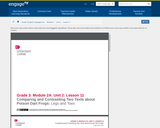
In this lesson, students compare and contrast two sections of text about the poison dart frog.

In this lesson, students continue to compare and contrast sections of two texts about the poison dart frog.
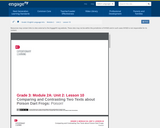
This lesson is the first of three in a series in which students compare and contrast sections of two texts about the poison dart frog.